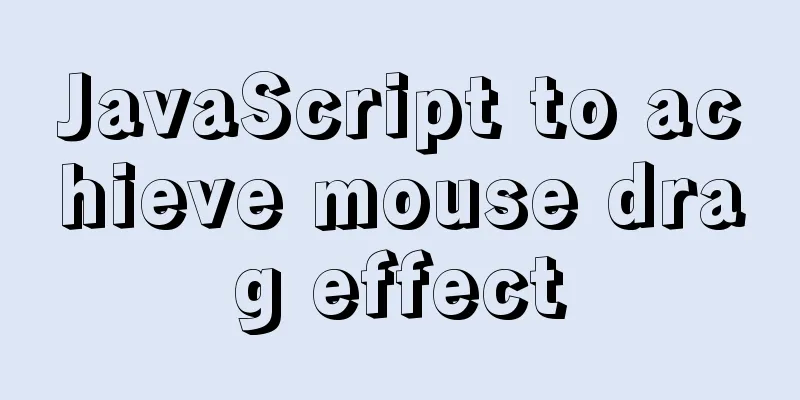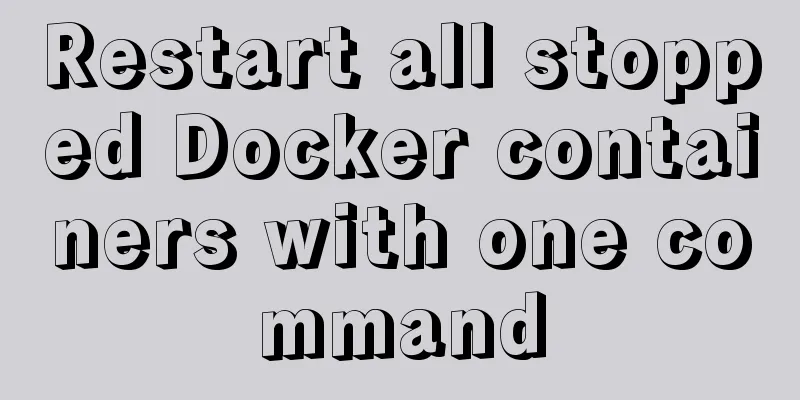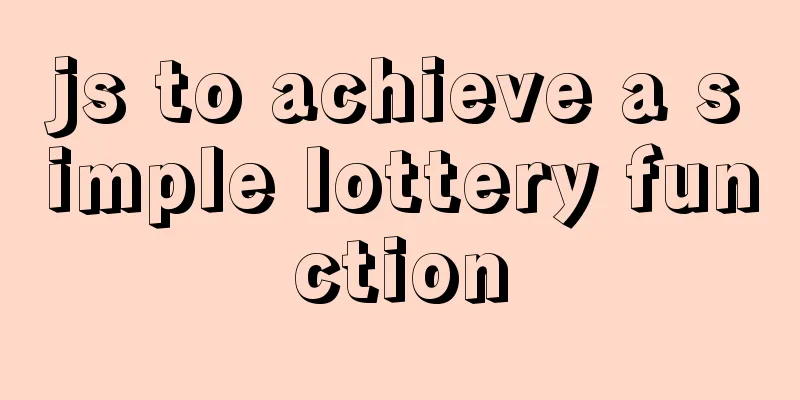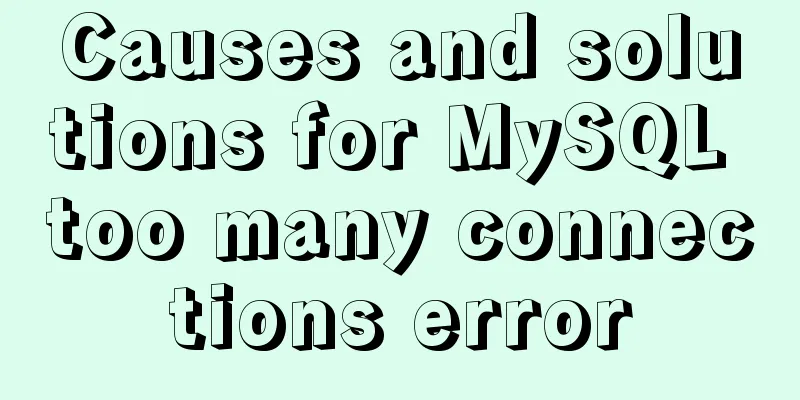JavaScript to achieve mouse drag effect

|
This article shares the specific code of JavaScript to achieve the mouse drag effect for your reference. The specific content is as follows The effect picture this time is as follows:
I think the difficulty of this experiment is to keep the relative position of the box and the mouse unchanged, and to achieve the dragging effect by pressing and moving the mouse. How to achieve the drag effect? We need to use three functions: In the callback function of the mouse press , we need to get the initial position of the mouse through In the mouse move callback function, we need to get the current position of the box based on the mouse position and the difference calculated previously, and then change its left and top values. Don't forget to set the position to absolute (because I forgot...) In the callback function of mouse up , we need to clear the mouse movement and mouse up, by setting Also pay attention! ! ! The mouse move function and the mouse lift function should be written in the mouse press function, because we want to design the subsequent behavior after the mouse is pressed, and it is very important that: The mouse down function is div's, the mouse move and mouse up function is document's Because we don't mean to move the mouse in the div, but to move the entire page The key points are probably these. Here is the code:
<!DOCTYPE html>
<html lang="en">
<head>
<meta charset="UTF-8">
<meta http-equiv="X-UA-Compatible" content="IE=edge">
<meta name="viewport" content="width=device-width, initial-scale=1.0">
<title>Document</title>
<style>
#box{
width: 100px;
height: 100px;
background-color: aquamarine;
border-radius: 14px;
box-shadow: 2px 2px 6px rgba(0,0,0,.3);
/* Hey guys, you want to move and change the left without setting the position. . . */
position: absolute;
}
</style>
</head>
<body>
<div id="box"></div>
<script>
let box = document.getElementById("box");
box.onmousedown=function(event){
let disx = event.clientX-box.offsetLeft;
let disy=event.clientY-box.offsetTop;
//This is not box.onmousemove, it is document.onmousemove
document.onmousemove=function(event){
box.style.left=event.clientX-disx+'px';
box.style.top=event.clientY-disy+'px';
}
//To be written in ommousedown document.onmouseup=function(){
//Set both to null
document.onmousemove=null;
document.onmouseup=null;
return false;
}
}
</script>
</body>
</html>The above is the full content of this article. I hope it will be helpful for everyone’s study. I also hope that everyone will support 123WORDPRESS.COM. You may also be interested in:
|
<<: How to uninstall MySQL cleanly (tested and effective)
>>: CSS realizes the layout method of fixed left and adaptive right
Recommend
15 Best Practices for HTML Beginners
Here are 30 best practices for HTML beginners. 1....
MySQL 5.7 decompressed version installation, uninstallation and garbled code problem graphic solution
1. Installation of the decompressed version (1). ...
Use native js to simulate the scrolling effect of live bullet screen
Table of contents 1. Basic principles 2. Specific...
How to write HTML head in mobile device web development
Copy code The code is as follows: <head> &l...
Summary of several commonly used CentOS7 images based on Docker
Table of contents 1 Install Docker 2 Configuring ...
Swiper.js plugin makes it super easy to implement carousel images
Swiper is a sliding special effects plug-in built...
How to use http and WebSocket in CocosCreator
Table of contents 1. HttpGET 2. HTTP POST WebSock...
Solve the problem of Tomcat10 Catalina log garbled characters
Running environment, Idea2020 version, Tomcat10, ...
Web Design Tutorial (7): Improving Web Design Efficiency
<br />Previous article: Web Design Tutorial ...
A record of the pitfalls of the WeChat applet component life cycle
The component lifecycle is usually where our busi...
MySQL 5.7.17 installation and configuration graphic tutorial
The blogger said : I have been writing a series o...
Why Seconds_Behind_Master is still 0 when MySQL synchronization delay occurs
Table of contents Problem Description Principle A...
Use Javascript to develop sliding-nav navigation plug-in with sliding bar effect
Table of contents 1. Introduction 2. Usage 3. Dev...
Windows 10 1903 error 0xc0000135 solution [recommended]
Windows 10 1903 is the latest version of the Wind...
Using zabbix to monitor the ogg process (Windows platform)
This article introduces how to monitor the ogg pr...










